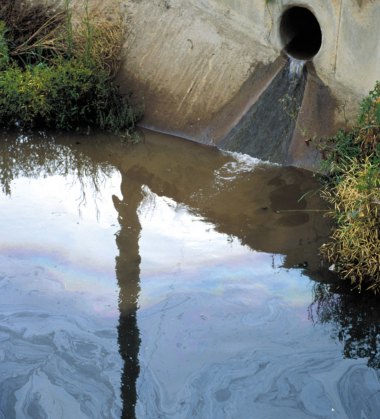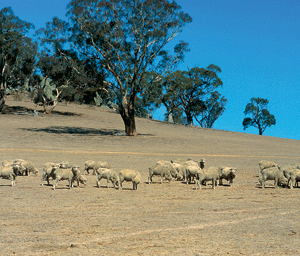
|
Published: 14 November 2011
Identifying the risk of past ‘oil leaks’ to human health
Australia has taken a key step towards improving measures of human health risk with the release of new guidelines targeting one of the most common sources of industrial contamination – petroleum hydrocarbons.

|
|
Petroleum hydrocarbon contamination from a road drain near Griffiths, NSW. Credit: scienceimage/CSIRO
|
The Cooperative Research Centre for Contamination Assessment and Remediation of the Environment (CRC CARE) has released the guidelines on health screening levels (HSLs) for petroleum hydrocarbons in soil, soil vapour and groundwater.
‘Petroleum products are our commonest source of contaminants and are found in many of the nation’s 160 000 contaminated sites,’ CRC CARE managing director Professor Ravi Naidu says.
‘What Australia has needed for a long time is a reliable way of knowing whether they constitute a health risk or not in different situations, to inform the decision about what level of clean-up is necessary.
‘These new HSLs provide a screening tool to determine if a health risk exists.’
‘The HSLs represent the state-of-the-art in risk assessment and policy in Australia. The documents have been fully reviewed by experts in the US, Canada and Australia, and CRC CARE intends to update them in line with global advances in science, technology and policy.’
CRC CARE Demonstration Program Coordinator, Dr Prashant Srivastava, explains that every site is different in terms of its soils and groundwater conditions, and that this wide range of possible hydrocarbons, soil types and groundwater scenarios are covered by the HSLs.
Where hydrocarbon levels exceed the HSL, Dr Prashant says the user will be alerted to the need for closer investigation of the site to assess more fully the potential risk.
‘Every former petrol service station, motor workshop, rail yard, fuel dump, gasworks or factory over the past 100 years is potentially a hydrocarbon-contaminated site.
‘Most of these are now in the heart of our big cities where people live, work and play. There are so many of them that we need to be able to make good decisions about which ones are in need of remediation.
‘The HSLs help us to decide the level of risk posed by different types of contamination in different situations, so clean-up can be prioritised.’
A primary focus of the HSL research has been understanding ‘vapour pathways’ – how noxious fumes from hydrocarbon contaminants can seep through soil and groundwater to reach people living or working on or near a former industrial site.
Source: CRC CARE



